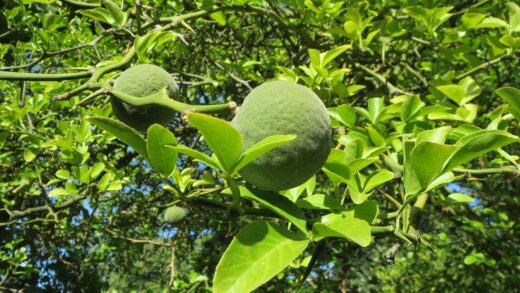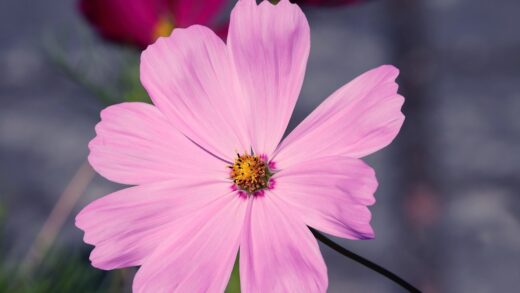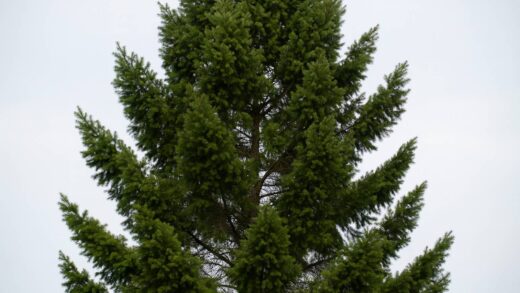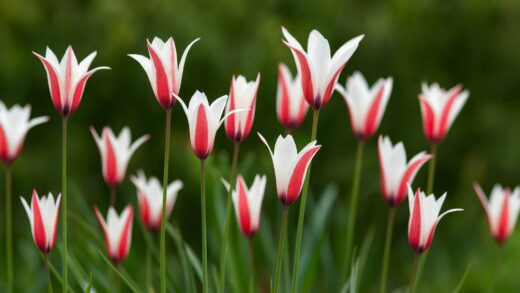Love-in-a-mist is generally considered a resilient and relatively trouble-free plant, often bypassed by many of the common pests and diseases that plague other garden annuals. Its slightly pungent foliage can act as a deterrent to some insects, and its preference for sunny, well-drained conditions helps it to naturally resist many fungal problems. However, no plant is entirely immune to challenges, and under certain environmental conditions or when under stress, love-in-a-mist can become susceptible to a few specific issues. The key to managing these potential problems lies not in reactive chemical treatments, but in proactive prevention through good garden hygiene and the cultivation of strong, healthy plants from the outset. A vigorous plant is always its own best defense against pests and diseases.
The foundation of disease and pest prevention is rooted in providing the plant with its ideal growing conditions. When love-in-a-mist is grown in a location with full sun, excellent air circulation, and well-draining soil, it is far less likely to encounter problems. Overcrowding is a significant contributing factor to many issues, as it reduces airflow between plants, trapping humidity and creating a perfect breeding ground for fungal spores. Properly thinning seedlings to their recommended spacing is one of the most effective preventative measures you can take to ensure each plant has the space it needs to thrive.
Good garden hygiene plays an equally crucial role in minimizing the risk of problems. This involves keeping the planting area free of weeds, which can compete for resources and harbor pests and disease pathogens. It is also important to remove any dead or diseased plant material promptly. At the end of the growing season, clearing away the spent plant debris is essential, as this is where the eggs of some pests and the spores of many fungal diseases can overwinter, ready to re-infect the garden the following spring. A clean and tidy garden is a healthy garden.
Watering practices can also have a profound impact on the plant’s susceptibility to disease. As has been emphasized, love-in-a-mist despises wet feet and is prone to root rot in soggy soil. Furthermore, watering from overhead, which wets the dense foliage, can create the humid conditions that favor the development of diseases like powdery mildew and botrytis. By watering at the base of the plant in the morning, you keep the foliage dry and reduce the likelihood of these common fungal issues taking hold, ensuring the plant remains healthy and vibrant throughout its life.
Finally, promoting biodiversity in your garden is a powerful, long-term strategy for pest management. By planting a variety of flowering plants that attract beneficial insects—such as ladybugs, lacewings, hoverflies, and parasitic wasps—you can establish a natural army of predators that will help to keep pest populations, like aphids, in check. This integrated pest management approach creates a balanced ecosystem where problems are often solved naturally, reducing or eliminating the need for any chemical interventions and fostering a healthier overall garden environment.
More articles on this topic
Common fungal diseases
Powdery mildew is one of the most common fungal diseases that can affect love-in-a-mist, particularly during periods of warm days and cool, humid nights. It is easily identifiable by the characteristic white, dusty or talcum-powder-like coating that appears on the surfaces of leaves, stems, and sometimes even the flower buds. While it is unsightly and can reduce the plant’s photosynthetic ability if the infection is severe, it is rarely fatal. The disease thrives in conditions of high humidity and poor air circulation, which is why proper plant spacing is so important.
To manage powdery mildew, prevention is the best approach. Ensure plants are not crowded and water at the soil level to keep the foliage as dry as possible. If an infection does appear, the first step is to remove and dispose of the most heavily affected leaves to reduce the number of fungal spores available to spread. For minor infections, organic fungicides such as those based on sulfur or potassium bicarbonate can be effective when applied according to the label instructions. A simple homemade spray of one part milk to nine parts water can also work as a preventative or to control a mild outbreak.
Another potential fungal issue is root rot, which is not a specific disease but rather the result of soil-borne fungi, like Pythium or Phytophthora, attacking the roots of the plant. This problem is almost always caused by poor drainage and overwatering. When the soil is saturated for extended periods, the roots are deprived of oxygen and begin to decay, making them vulnerable to these opportunistic pathogens. The above-ground symptoms include wilting (even when the soil is wet), yellowing leaves, and stunted growth. By the time these symptoms are obvious, the damage to the root system is often extensive.
Unfortunately, there is no cure for root rot once it has taken a firm hold. The affected plant will likely decline and die and should be removed from the garden to prevent the spread of the pathogens in the soil. The only effective way to deal with root rot is to prevent it from ever happening. This comes back to the fundamental principles of cultivating love-in-a-mist: choose a site with excellent drainage, amend heavy soils to improve their structure, and be extremely careful not to overwater. For container-grown plants, ensure the pots have adequate drainage holes and use a high-quality, free-draining potting mix.
More articles on this topic
Identifying common insect pests
While love-in-a-mist is not a magnet for pests, it can occasionally be targeted by aphids. These are small, soft-bodied, pear-shaped insects that can be green, black, or pink in color. They typically cluster on the most tender parts of the plant, such as the new shoots and developing flower buds, using their piercing mouthparts to suck the nutrient-rich sap from the plant’s tissues. A small number of aphids is not a cause for alarm, but a large infestation can cause the new growth to become distorted and stunted, and they can also excrete a sticky substance called honeydew, which can lead to the growth of sooty mold.
Managing aphids is usually straightforward. For a light infestation, a strong jet of water from a garden hose is often enough to physically dislodge them from the plant. This may need to be repeated every few days to keep the numbers down. If the problem persists, you can spray the affected areas with insecticidal soap, which is an effective contact insecticide that has a low impact on beneficial insects and the environment. It is crucial to get thorough coverage, especially on the undersides of leaves where aphids often congregate.
Another pest that might occasionally be found on the plants are thrips. These are tiny, slender insects that are very difficult to see with the naked eye. They feed by scraping the surface of leaves and flowers and sucking up the exuded juices, which results in a fine, silvery or stippled pattern on the foliage. In severe cases, they can cause deformation of the flowers. Thrips are most problematic in hot, dry weather. Keeping plants well-watered during dry spells can help to make them less susceptible. Reflective mulches, such as silver plastic, can also help to deter thrips from landing on the plants.
Slugs and snails can also be a nuisance, particularly when the love-in-a-mist plants are young, tender seedlings. These mollusks are nocturnal feeders and can chew ragged holes in the leaves or devour entire seedlings overnight. Their presence is often given away by the slimy trails they leave behind. There are numerous methods for controlling slugs and snails, from hand-picking them at night to setting up beer traps. Spreading a barrier of coarse material like crushed eggshells, diatomaceous earth, or copper tape around the planting area can also be effective at deterring them.
Integrated pest management strategies
Integrated Pest Management (IPM) is a holistic and environmentally sensitive approach to dealing with garden pests that prioritizes long-term prevention over reactive chemical treatments. The first step in an IPM strategy is always monitoring. Regularly inspect your love-in-a-mist plants, paying close attention to the undersides of leaves and new growth, to catch any potential problems early before they can escalate into a major infestation. Early detection makes any subsequent control measures much easier and more effective.
The second pillar of IPM is cultural control, which involves creating a garden environment that is unfavorable to pests. For love-in-a-mist, this includes all the best practices of cultivation: ensuring proper spacing for good air circulation, improving soil drainage, avoiding over-fertilization (which produces the soft, sappy growth that aphids love), and practicing good garden sanitation by removing debris. A healthy, stress-free plant grown in its ideal conditions is inherently more resistant to pest attacks.
Biological control is another key component of IPM. This involves actively encouraging the natural enemies of pests to take up residence in your garden. As mentioned, planting a diversity of flowers, such as alyssum, dill, and cosmos, will attract beneficial insects like ladybugs and lacewings, which are voracious predators of aphids. By creating a welcoming habitat for these “good bugs,” you can establish a self-regulating system where pest populations are kept at a low, manageable level without any intervention from you.
The use of pesticides, even organic ones, is considered a last resort in an IPM program. If a pest problem becomes severe enough to warrant a spray, always choose the least toxic option available, such as insecticidal soap or horticultural oil. Apply these treatments carefully and selectively, targeting only the affected plants to minimize the impact on beneficial insects and other non-target organisms. By following the principles of IPM, you can manage pests effectively while fostering a healthier and more resilient garden ecosystem.
Troubleshooting other plant problems
Sometimes, the problems affecting your love-in-a-mist may not be caused by a specific pest or disease, but by environmental or cultural factors. One common issue is leggy or spindly growth, where the plants become tall and weak with sparse foliage and few flowers. This is almost always a direct result of insufficient sunlight. If the plants are stretching and leaning in one direction, they are trying to reach for more light. The only remedy for this is to ensure that future plantings are sited in a location that receives at least six hours of direct sun each day.
Another potential problem is a lack of flowers, or a very poor floral display, on a plant that otherwise looks healthy and green. This issue can typically be traced back to an excess of nitrogen in the soil. As we have learned, too much nitrogen encourages the plant to pour all of its energy into producing foliage rather than blooms. This can happen if the soil was amended with too much fresh manure or if a high-nitrogen lawn fertilizer was accidentally applied to the flower bed. The solution is to avoid all further fertilization and, in subsequent years, to be much more sparing with nutrient amendments in that area.
The premature yellowing of leaves can also be a cause for concern. If it is only the oldest, lowest leaves on the plant that are turning yellow, this is often a natural part of the aging process and is not a problem. However, if the yellowing is more widespread and affects the newer growth, it can be a sign of several potential issues. It could indicate a nutrient deficiency (though this is rare), but it is much more likely to be a symptom of water-related stress. Both overwatering (leading to root rot) and severe underwatering can cause the leaves to turn yellow, so an assessment of the soil moisture is the first step in diagnosing the problem.
Finally, you might encounter issues with germination, where the seeds you have sown fail to sprout. This can be due to a few factors. The seeds may be old and no longer viable. The soil may have been kept too dry during the critical germination period. Alternatively, the seeds may have been sown too deeply, preventing them from getting the light they need. To ensure good germination, always use fresh seeds, sow them shallowly, and maintain consistent surface moisture until the seedlings are well up and growing.


















